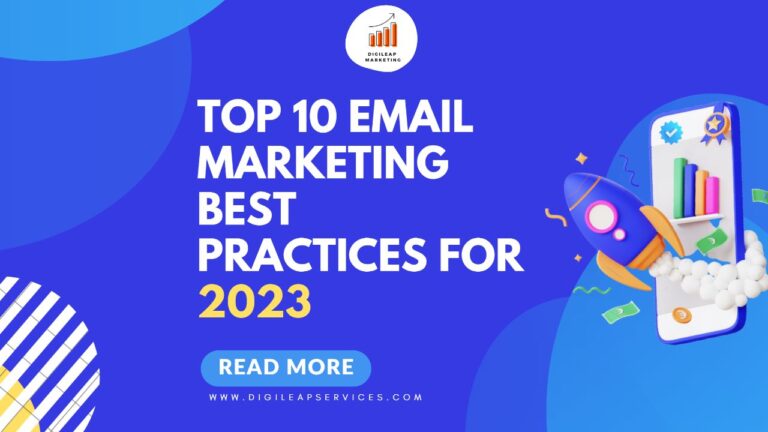SEO writing Guide in 2023
SEO writing Guide: Is search engine optimization (SEO) on its last leg? Some may say that SEO is no longer effective, but listening to such opinions is a waste, as SEO is not just relevant but flourishing.
Additionally, the pandemic is partly to blame (Covid 19). People are using the internet for learning, working, and playing more than ever.
According to Forbes, since COVID, internet usage has grown by 70%. 90% of Americans, according to Pew Research, consider the internet to be either a significant or essential part of their life.
Stay tuned to find out how SEO copywriting might boost your company’s success in 2023.
What is SEO Writing?
The use of keywords and key phrases in online content is referred, to as SEO authoring. To improve their site’s organic exposure and SERP ranks, SEO content writers and marketers employ SEO. Combining excellent material with specific search phrases is the best method to write for SEO.
When using traditional writing, the content creator is more likely to be concerned with achieving other objectives than having the product rank top in search engine results. Consumers may see these sorts of copy in the form of a television advertisement or product label, but an SEO copywriter connects with readers on a web page. With expert content producing, the objective can be open-ended enough to include both SEO writing guide results and conventional marketing consequences.
First Step: Setting Up Your SEO
The three stages of SEO copywriting are as follows. The first step is to get your content SEO plan ready. The second is concentrating on the writing itself. The last stage is optimization-focused.
The three steps for developing an SEO writing guide strategy for the content you produce are listed below.
Know Your Desired Audience
Your SEO research does not begin with a keyword tool. Your target consumers come first. They, who? What are they lacking? What queries and worries do they possess? What can you do to aid them?
If you are unsure, it is time to approach them directly. Attend sales and support calls, listen to call recordings, read call transcripts, and take customer polls. Don’t limit yourself to reading reviews and customer quotes. Learn about their problems and reasons in relation to their preference for your brand.
List Potential Topics
When coming up with subject ideas, use the data from your consumer research. Turn questions into blog topics. Additionally, you may use resources like Frase and BuzzSumo to identify related ideas to the ones you already came up with.
Check to see whether you can create clusters that appropriately cover the subjects. For this, Frase is fantastic because it displays a variety of LSI keywords and themes to help you make sure your content is thorough. When making your outline, this will be useful.
Carry out a keyword search.
It’s time to start researching keywords right now. To locate high-volume search phrases with little competition, use a tool like Surfer SEO, Ahrefs, Frase, or Semrush.
But consider search intent as well; don’t simply focus on the statistics. Examples of search intent categories include informative (seeking clarification), transactional (seeking to buy), and navigational (looking for a specific brand, website, or page).
Then, you may go one step further by grouping the keywords into the top, middle, or bottom of the funnel based on the client journey. The higher the purchasing intent, the closer you are to the bottom. For better conversion rates right away, it’s best to start at the bottom.
The best keywords are long-tail ones since they are simpler to rank. Since they are more specific, your content will receive more specific organic traffic.
Second Step: Writing Winning Copy
Your road to developing high-converting copy doesn’t start with writing, just like keyword research. Before putting pen to paper, there are numerous preparations you must make.
Examine Google’s First Page of Results (Your Competitors)
Enter the term that you are writing. What do you discover on page one? Knowing this is essential if you want to write content that Google wants and that is superior to what is already available.
To determine what they cover, examine their subheadings. Extracting the top 20 sites from the search engine results page (SERP) and understandably arranging their h2s tools, like Frase, accelerate this process.
Otherwise, go through the first ten results and examine their layout. Check to see what is missing and what subtopics need to be covered. Gather the h2s from the top 20 (or even 30) sites for the search phrase to fill in the content gaps.
Also, consider the following:
- The many sorts of content (is it sales sites, landing pages, blogs, PDFs, or videos?).
- The types of content (are they reviews, opinion pieces, news stories, how-tos, listicles, etc. Do they also include plenty of photographs, video, etc.?).
- The perspective of the material (are they produced for novices or specialists or is the tone favorable, unfavorable, or neutral?).
In the SEO writing guide, this should help you decide how to go about producing original content.
Check Out the “People Also Ask” Section.
You may find a “people also ask” area on Google by scrolling below the advertisements. You may add hidden treasures to your content by looking here. Include these queries and fully address them so Google (and your viewers) will find your blog article to be comprehensive and worthy of sharing.
By doing this, you may receive backlinks (also known as link juice), which are essential for moving up the page rankings.
According to Ahrefs, pages with more backlinks receive more traffic from Google.
Discover Rich Snippets
Maps appear when certain search phrases are used, indicating a local search. Others could show off menus, photos, product listings, or question-and-answer sections. Discover how to get your content into the rich snippets for your search query.
If there is an answer box for instance, format your h2s as questions and provide the answers in the first phrase. Your responses can also be organized as a list with several stages or solutions. Outline your article.
The moment has come to draft your content outline. A preliminary overview with h2s addressing the subtopics your rivals are talking about should be made using your research. And the queries listed under “People Also Ask,” etc. The more research you do, the more your plan will change.
You can also utilize these sources to further your research:
- YouTube (discover videos you can embed or get info from) (find videos you can embed or pull information from).
- Social media platform (find posts you can embed).
- Influencers (reach out to specialists in the sector to gather quotes) (reach out to experts in the industry to obtain quotes).
- H.A.R.O. (send out a request for quotations and watch them flow into your email) (put out a request for quotes and watch them pour into your inbox).
- Audio Notes (search through podcasts to find angles, tips, and quotes for your piece).
- Research reports (collect information to support your arguments from trustworthy sources no older than two years).
- Use SEO tools like Frase for SEO writing guide(find LSI terms and questions from forums to discuss and research further).
Make A Crude Initial Draft
Although some argue against creating clumsy drafts, brain dumping helps you swiftly overcome writer’s block and blank pages. Gather all the data you have and put it on the website. After that go through it and rearrange it to improve the flow.
You are currently writing for humans rather than search engines. The optimization part is something you can deal with later. Focus instead on providing complete and coherent answers by connecting the connections.
Create A Lovely Final Draft
Next, polish your preliminary text by correcting grammar issues and including aspects that will make the piece easier to read. This comprises of the following:
- Placing pictures (grab charts from research reports, embed codes from social influencers, or create your graphics using Canva).
- Including quotations (make sure the quotes you’ve gathered enhance the narrative rather than stand out). Utilize the block quote function to make it stand out positively.
- Dividing paragraphs (two to three sentences per paragraph keeps boring blocks of text at bay).
- Constructing h2 and h3 explanations for each part (for skimmability).
- Writing concise but informative paragraphs (no fluff or unnecessary jargon).
- When applicable, use numbered lists and bullet points.
- Vocalizing it aloud (so it sounds as captivating as it looks on screen).
Step Three: Improving Your Last Draft
It’s time to optimize your final draft after finishing it. A minimum of one h2 and your main keyword should appear in the introduction, body, and someplace else. Don’t overuse it to avoid making it hard to read and spammy-looking.
According to some experts, the ideal keyword density is between 2% and 3%. To reduce the use of keywords over-optimization is displayed by tools like Surfer SEO.
To improve readability, depth, and SEO writing guide, look for variants of the main term. To verify the reading level, use a program like Hemingway, Grammarly, or ProWritingAid. It is best to keep it at an eighth-grade level or below and without jargon (unless your target audience is experts).
These technologies also pick up on content errors that you might overlook, such as passive voice, run-on sentences, and repetitions. They even provide simpler word suggestions that make your text easier to read. After that, add any LSI keywords you missed by using Frase, Ahrefs, or Semrush.
Links to the websites where you found the information, quotations, or photos. And connect to blog entries and other pages on your website. This increases time spent on your site and brings people to other pertinent material (and your search engine ranking). Because they are all pertinent and linkable, developing content clusters is brilliant.
But here’s a cool approach if you’re not using clusters. The following into Google:
Website: “your topic/keyword” at yoursite.com
Following that, Google will display all of your website’s pages that are relevant to this search keyword, allowing you to connect to them. What IMH returns for the term “influencer marketing” is as follows:
Reread it aloud once you’ve finished optimizing to ensure the flow is still good.
An Actual Instance of Fantastic SEO Copywriting
Do you want to know what effective SEO copywriting looks like? So a content marketing agency’s blog post would be a good candidate for analysis. We’ll look at an article from Animalz titled “Experiment, Systematize, Differentiate: The Content Strategy Maturity Model” for this analysis.
When searching for “content maturity model,” it appears on page one. But nowhere in the text is this precise keyword phrase used. This demonstrates how shrewd Google is becoming and the superiority of LSI keywords.
Google will still rank you for a phrase if it exists in your content, whether it is in perfect sequence or broken up by other terms.
You will now see a regular format when reading the article:
- H2
- first paragraph
- List in bullet form with meanings
- Paragraph providing further details
- Image to illustrate the subject
- Another tip-filled paragraph
- Collection of numbers and examples
Start Writing SEO Copy That Converts
You want to turn visitors into leads, not just increase traffic to your website. And to accomplish that, you need an SEO copywriting approach centered on creating high-quality content that achieves your main objectives.












